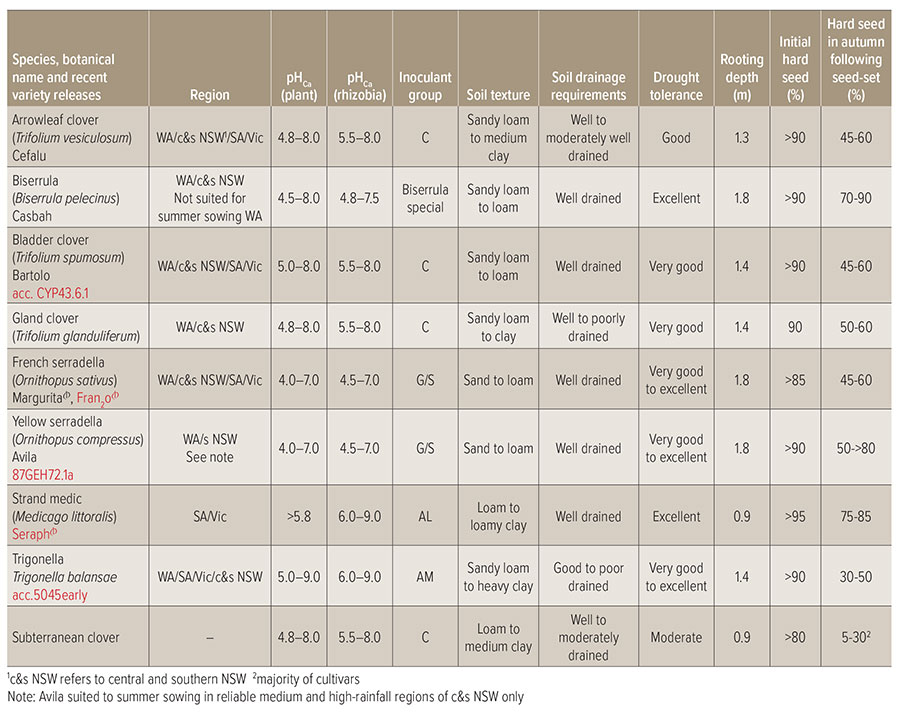The Dryland Legume Pasture Systems project has built on decades of work by Murdoch University and the Western Australian Department of Primary Industries and Regional Development to develop novel hard-seeded legume pasture species together with South Australian Research and Development Institute’s continued efforts in developing medics for low to medium rainfall regions.
These new hard-seeded species have several beneficial features: aerial seed production, seed dormancy and seeds that lack burrs and spines that could otherwise contaminate fleeces. Novel establishment methods such as summer sowing encourages seed dormancy breakdown during late summer, and germination on opening autumn rains.
Vigorous legume pastures create large, robust seedbanks, giving growers the flexibility to switch paddocks between crop and pasture production quickly – a useful attribute for growers seeking to capitalise on commodity prices or seasonal conditions. The aerial-seeding legumes can also be harvested with conventional harvesters, eliminating the need for extra machinery. The end result is a comparatively low-cost seed source for pasture renovation.
These new species have been evaluated through the DLPS project for their adaptation across southern Australian low to medium-rainfall environments and matched to their appropriate inoculant (rhizobia) group - examples are shown in Table 1, together with new variety releases.
Table 1: Soil requirements for optimal performance for a selection of new-generation legume species and their inoculants (rhizobia) evaluated in the Dryland Legume Pasture Systems, together with other plant attributes. Subterranean clover is included for comparison. Varieties and accessions shown in red text were released or are near released as a result of the DLPS program.

This research was part of the national Dryland Legume Pasture Systems project supported by the Australian Government Department of Agriculture, Water and Environment (DAWE) Rural R&D for Profit program and the Grains Research & Development Corporation, Meat & Livestock Australia and Australian Wool Innovation.
More Information: Dr Stephen Loss, stephen.loss@grdc.com.au

























































